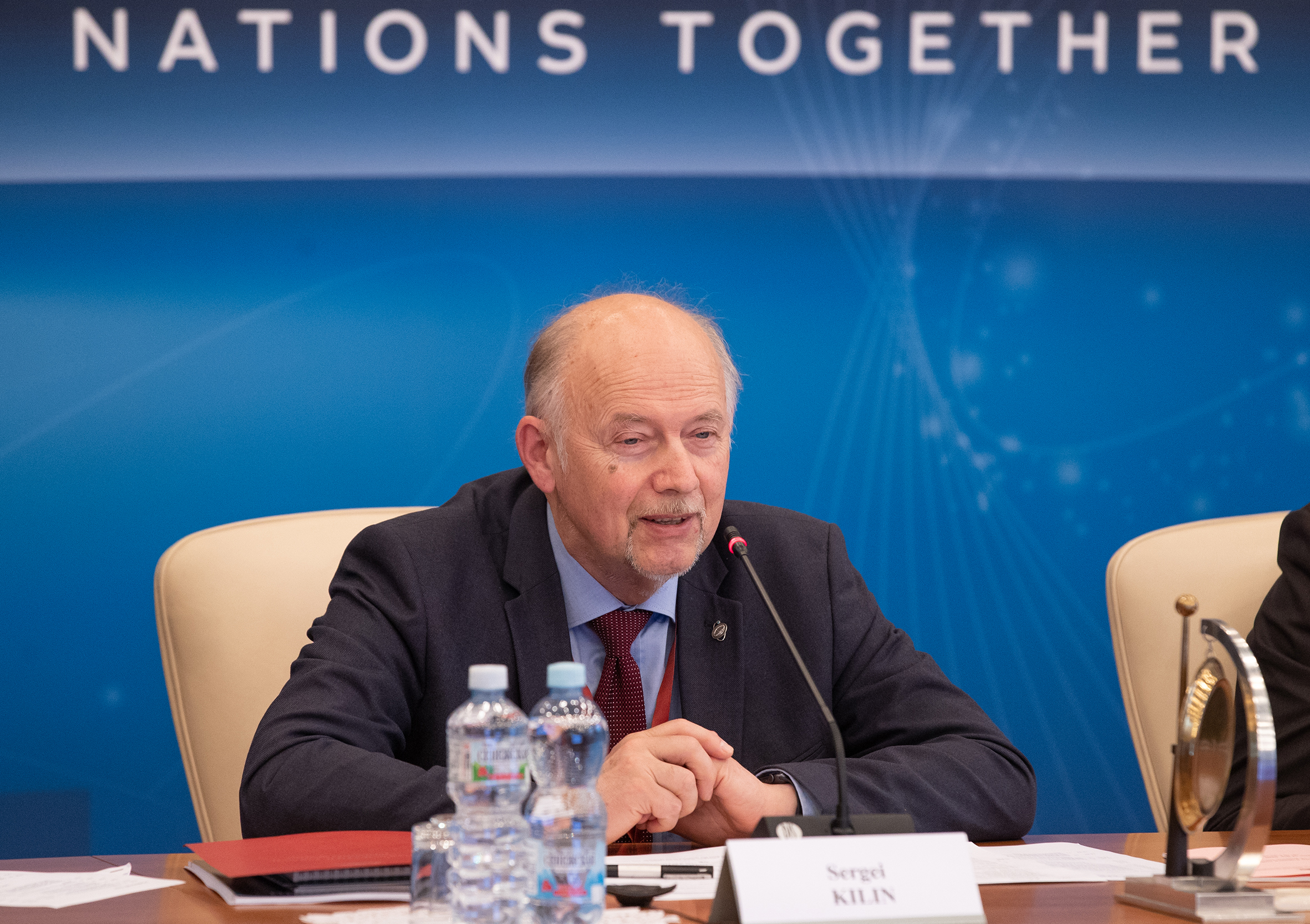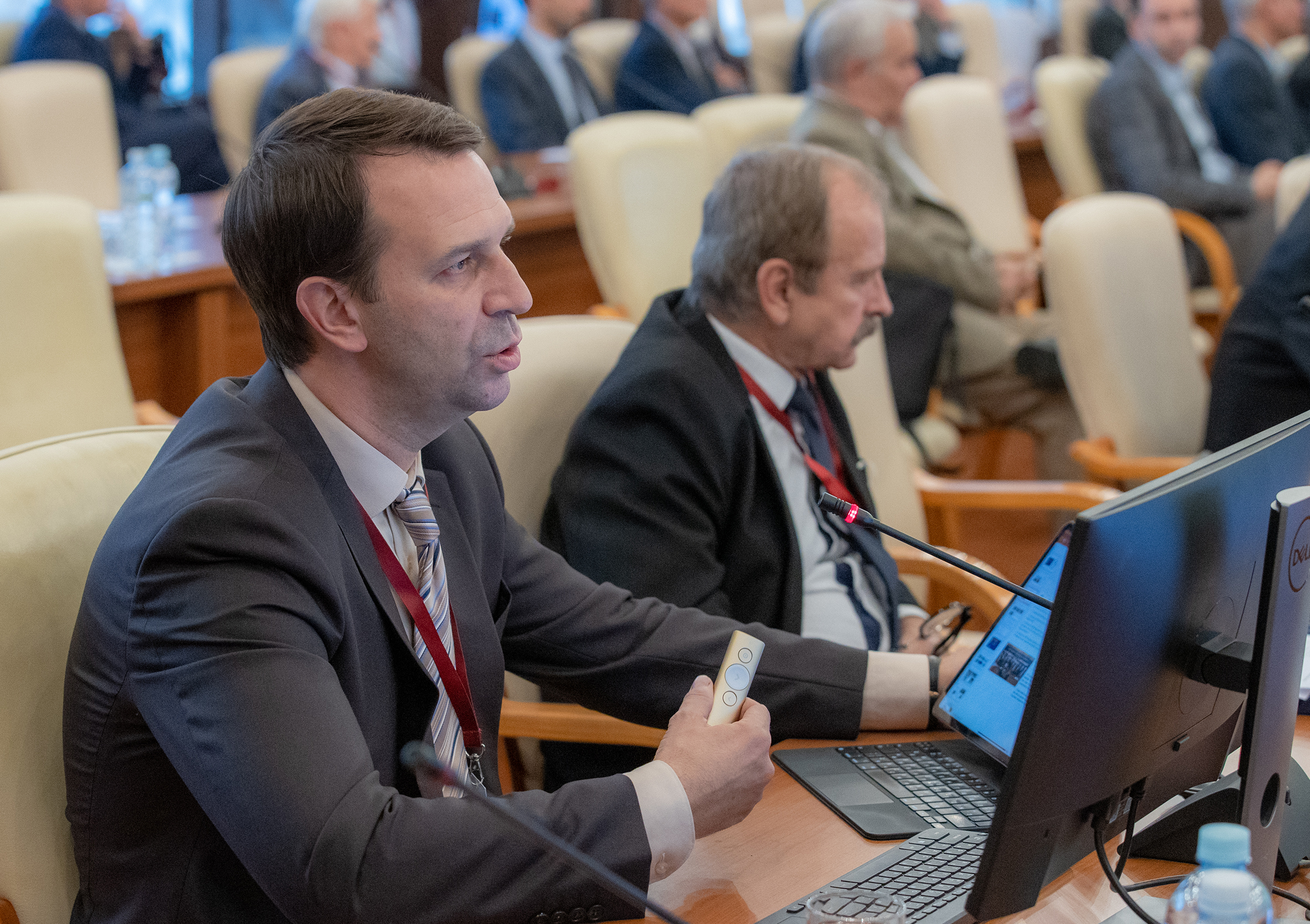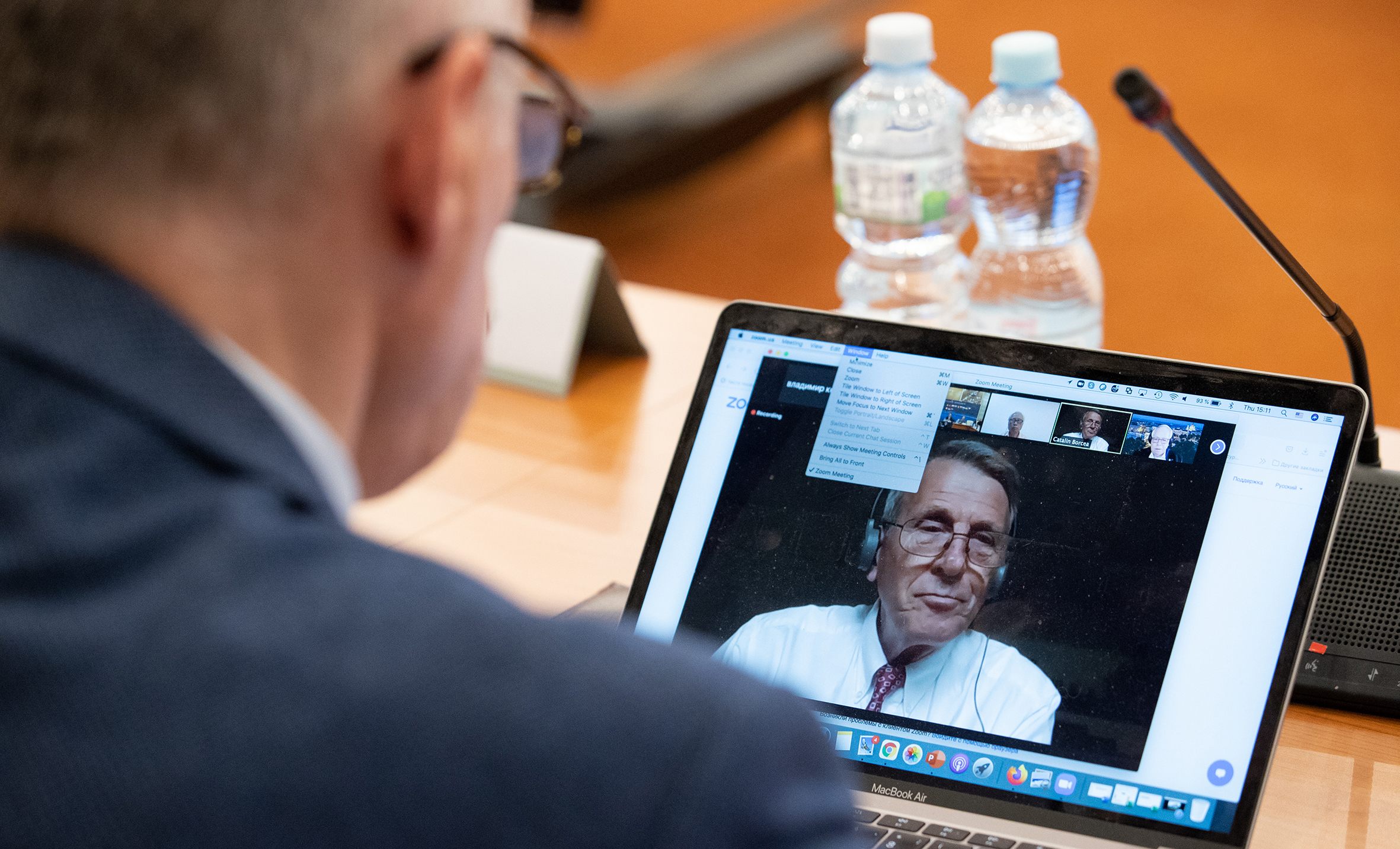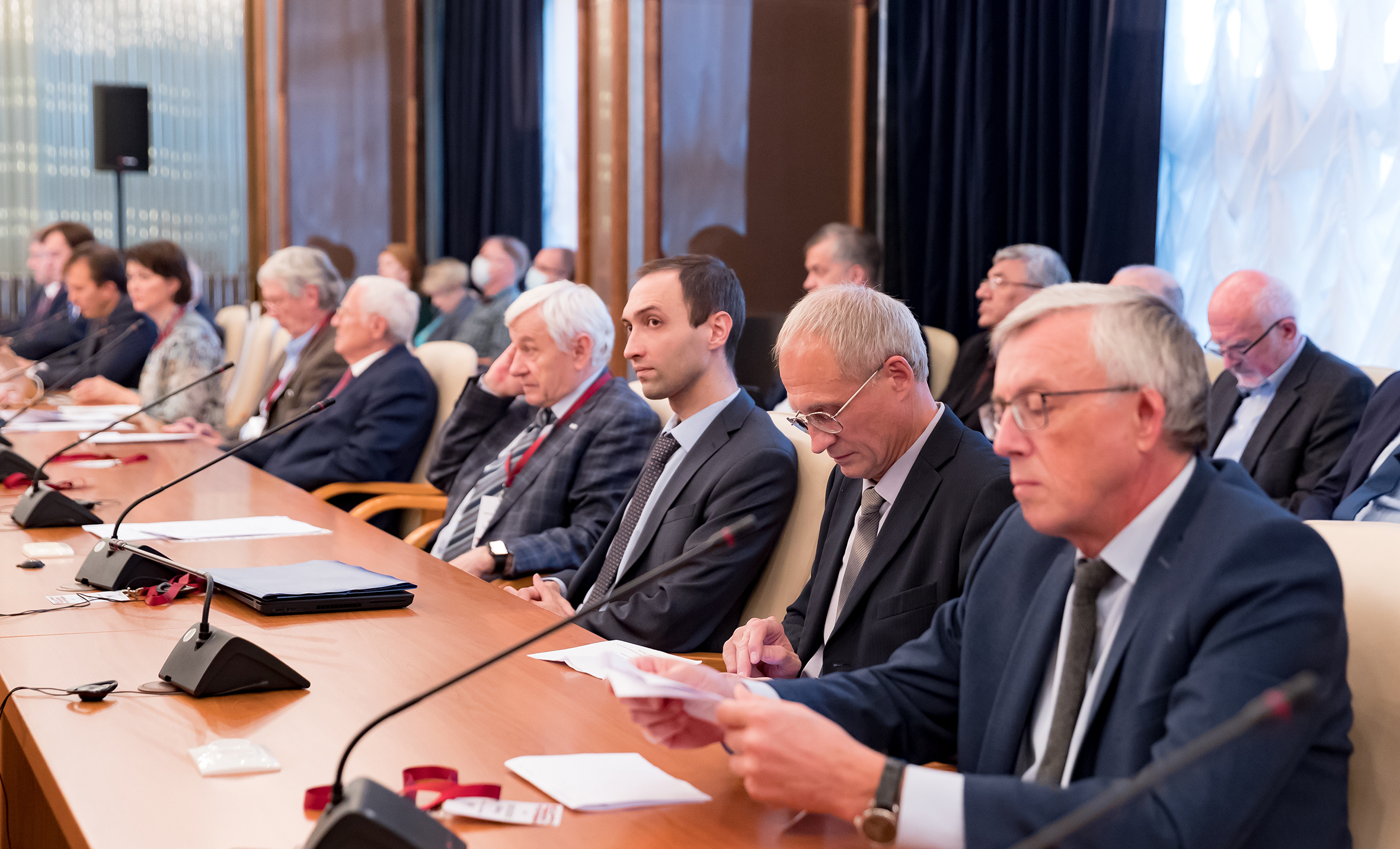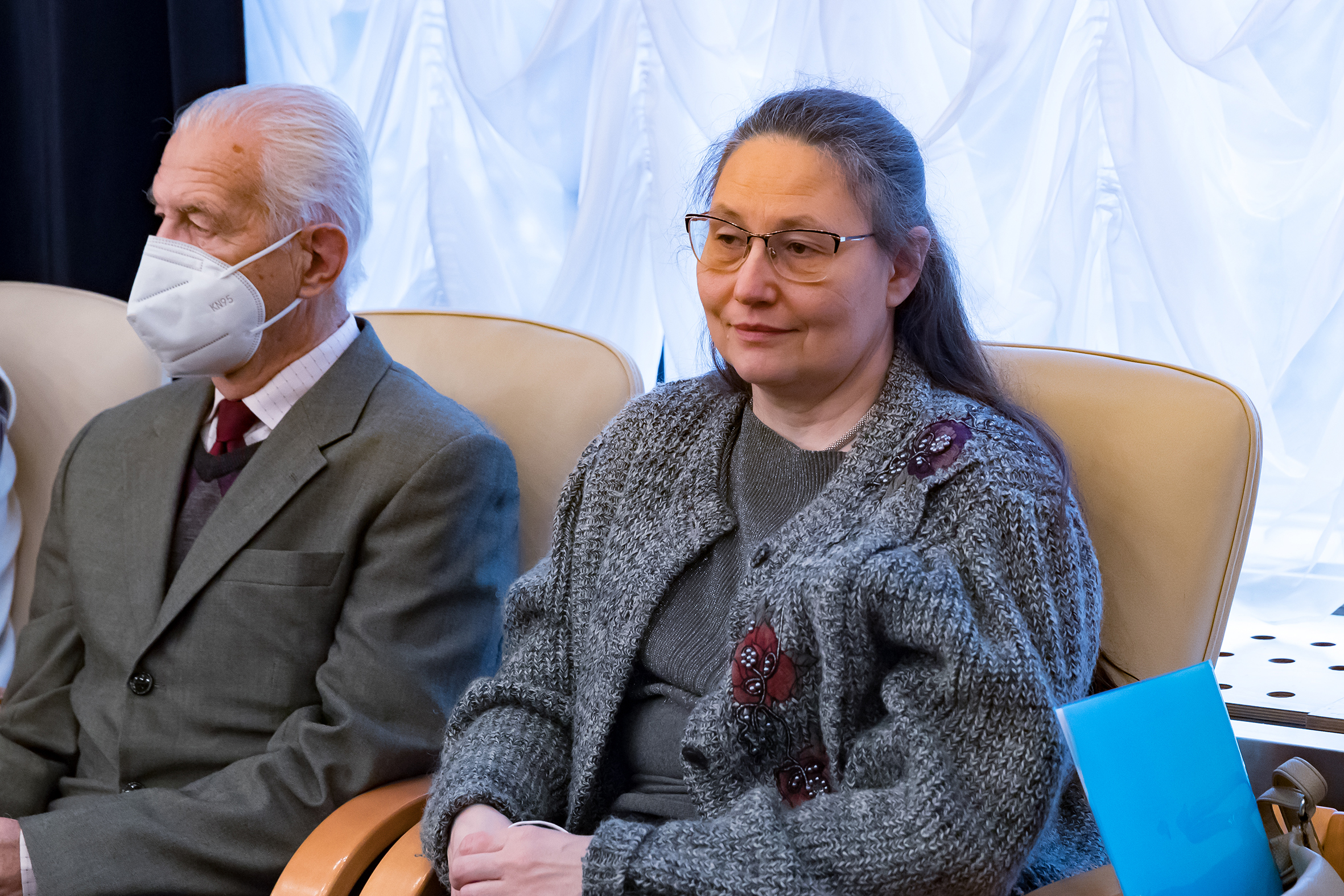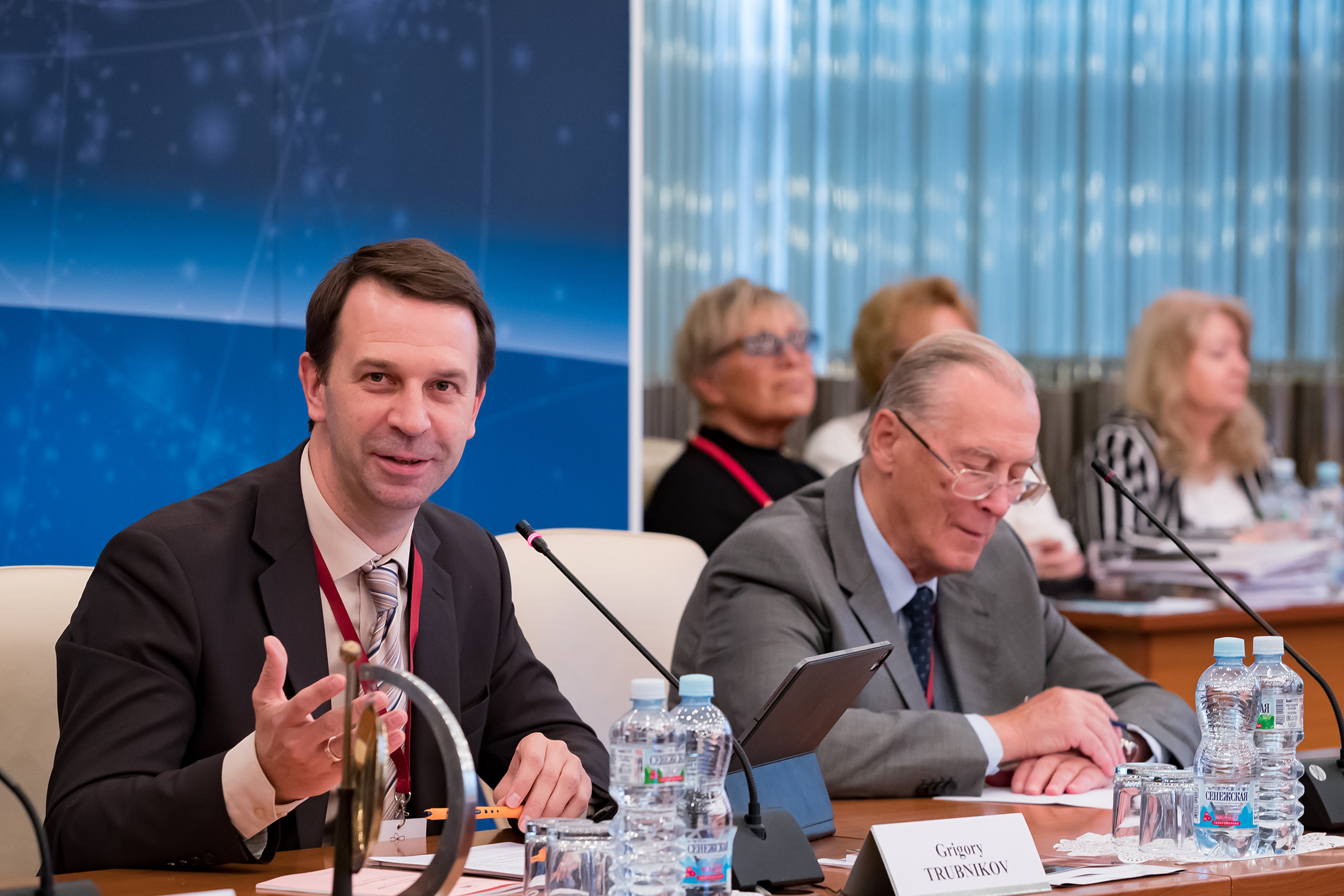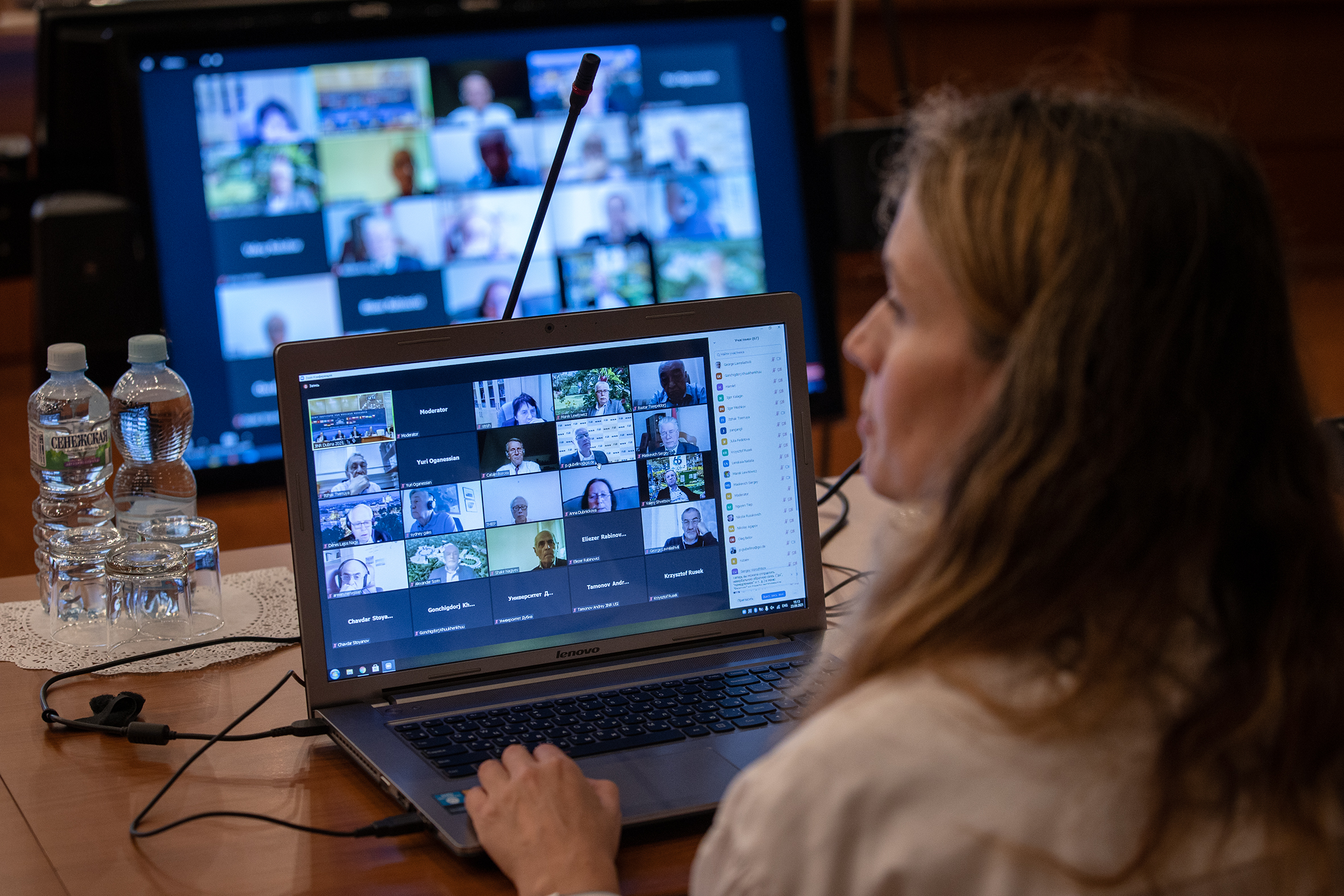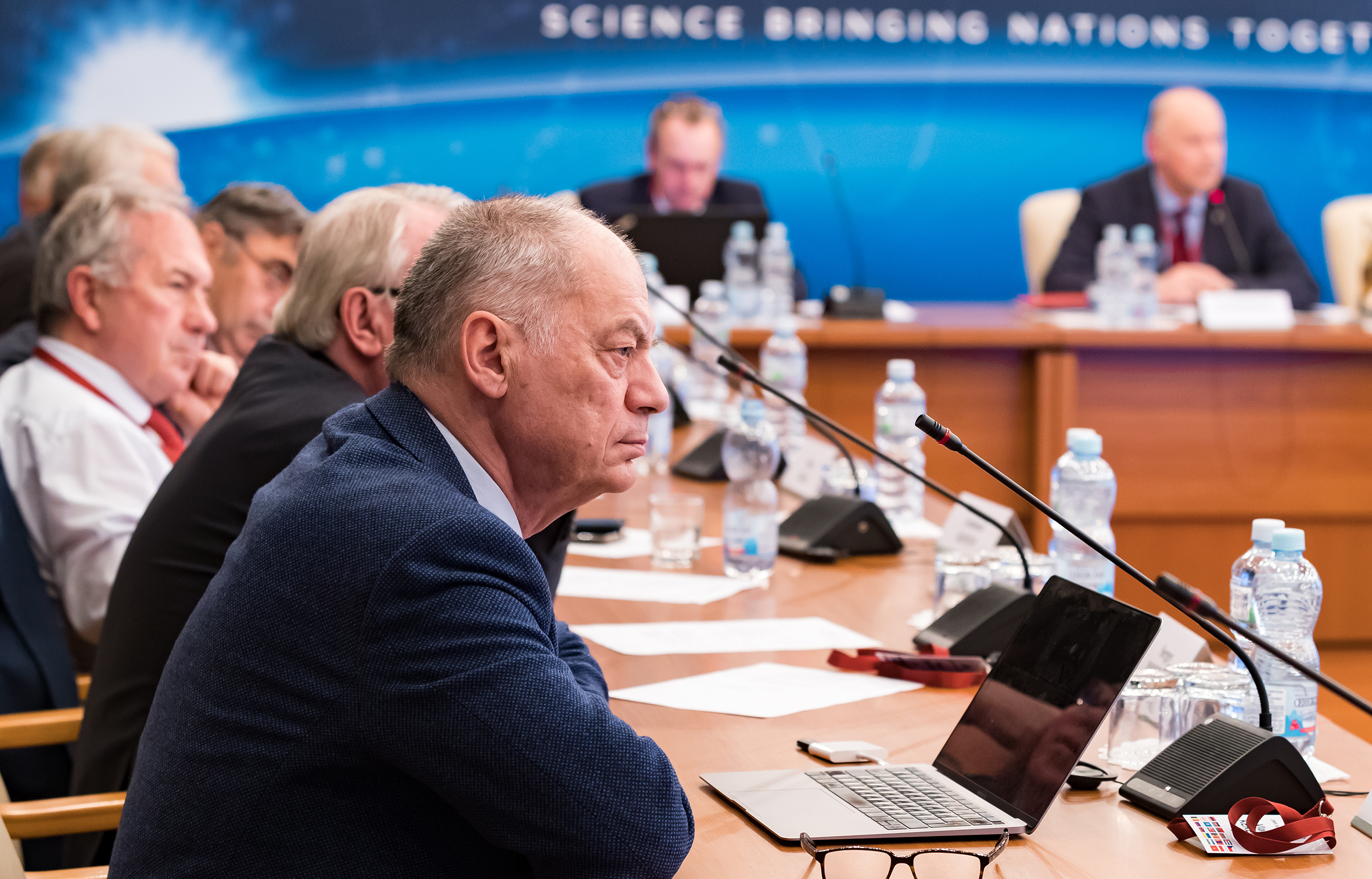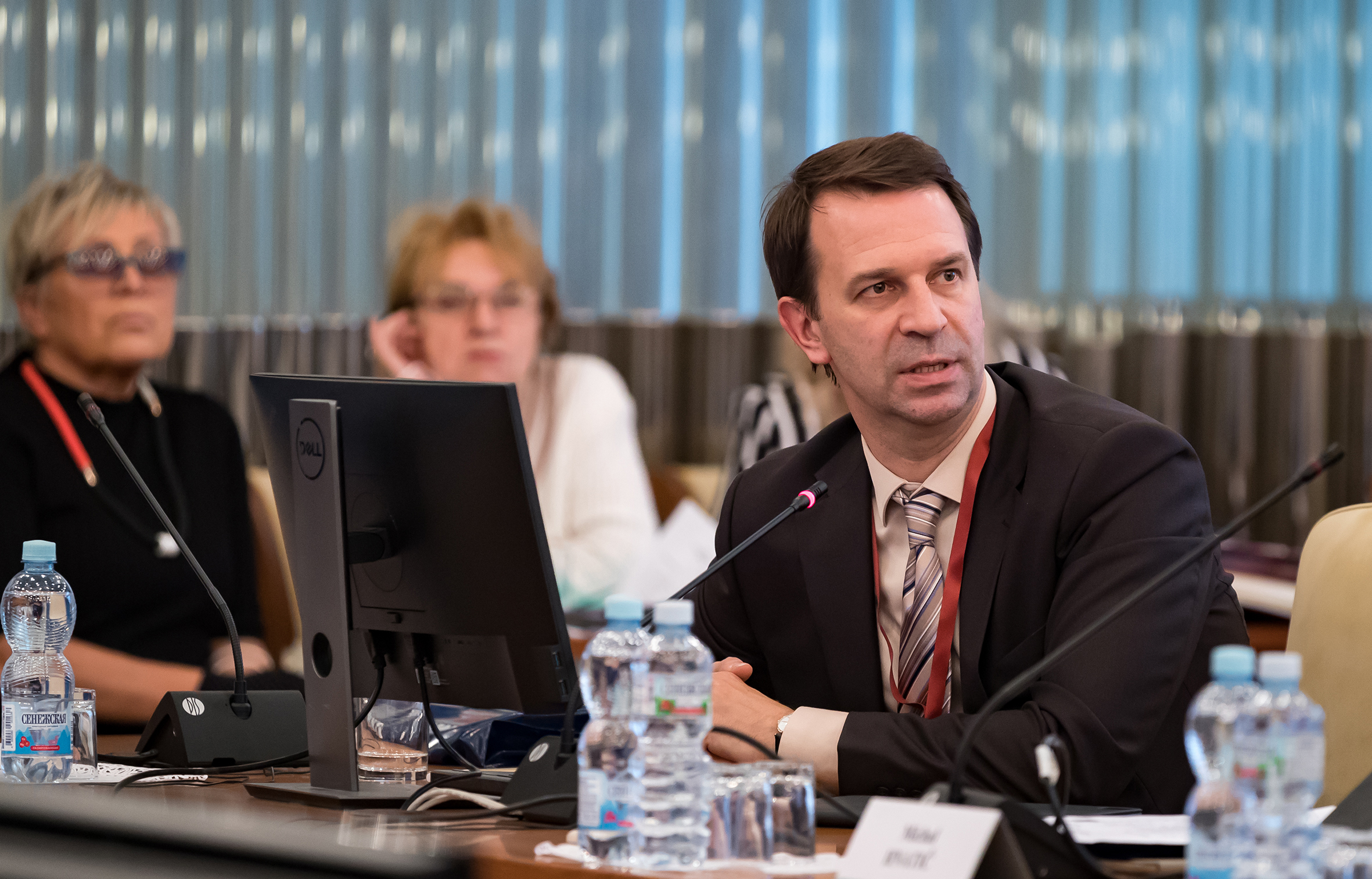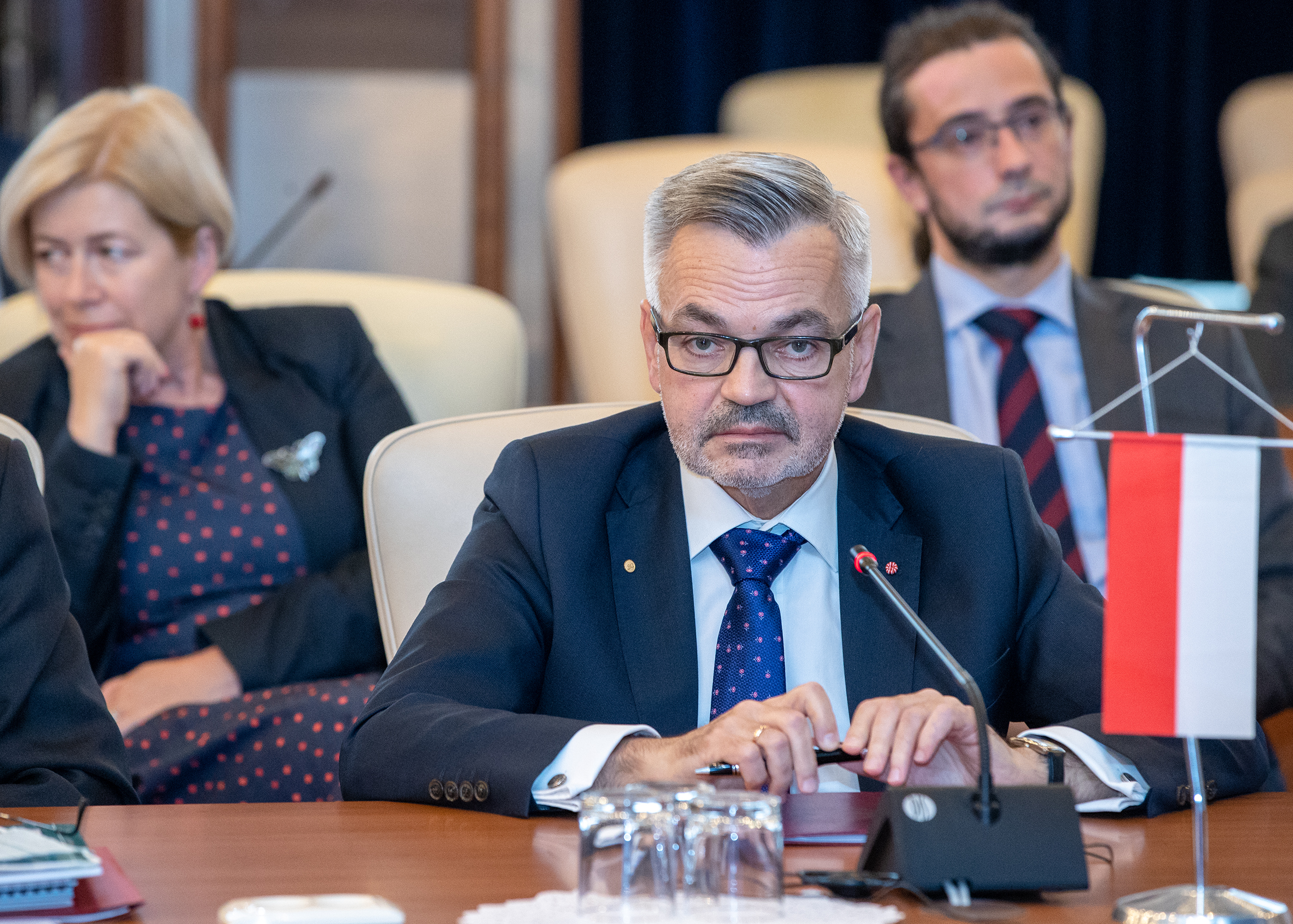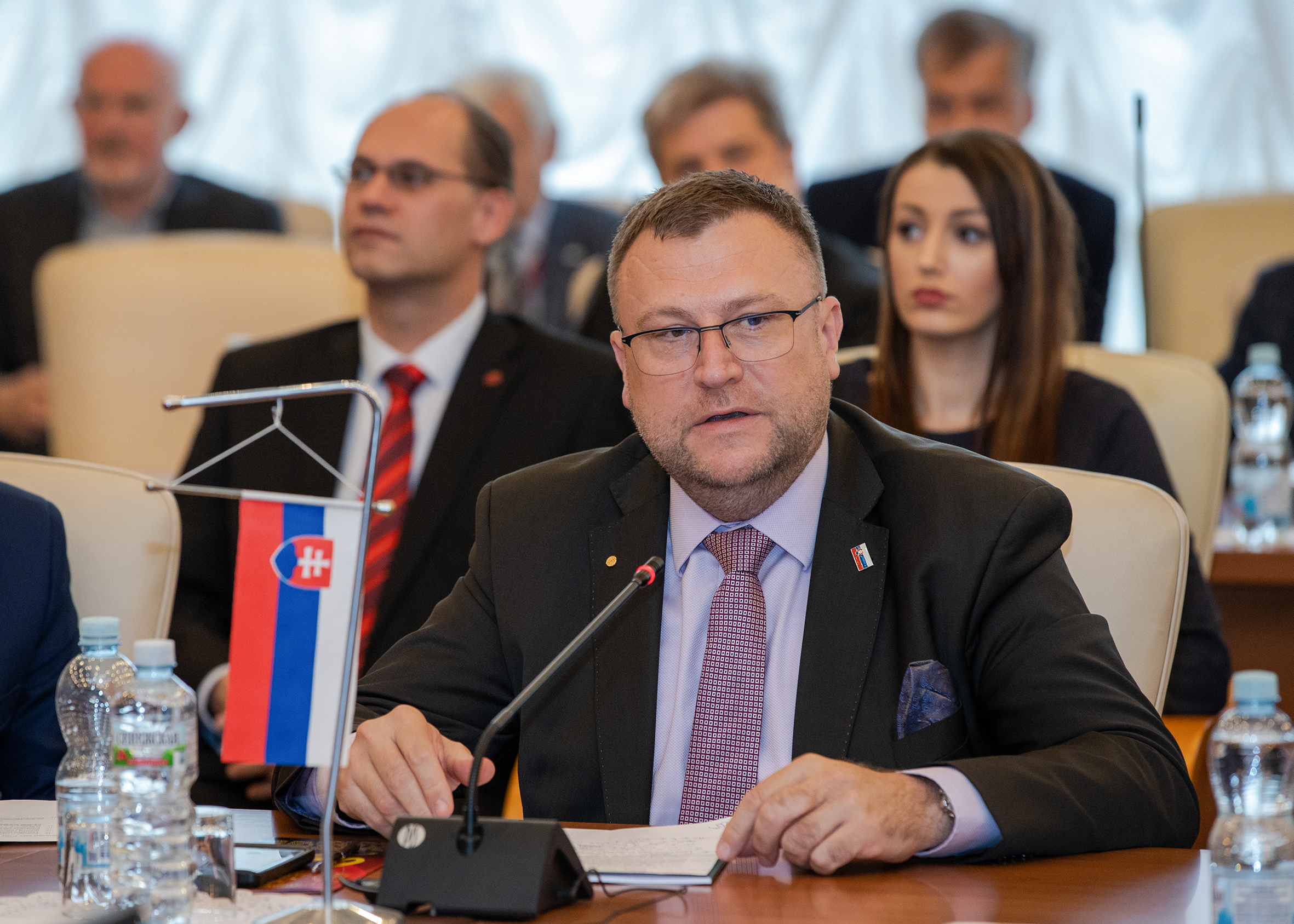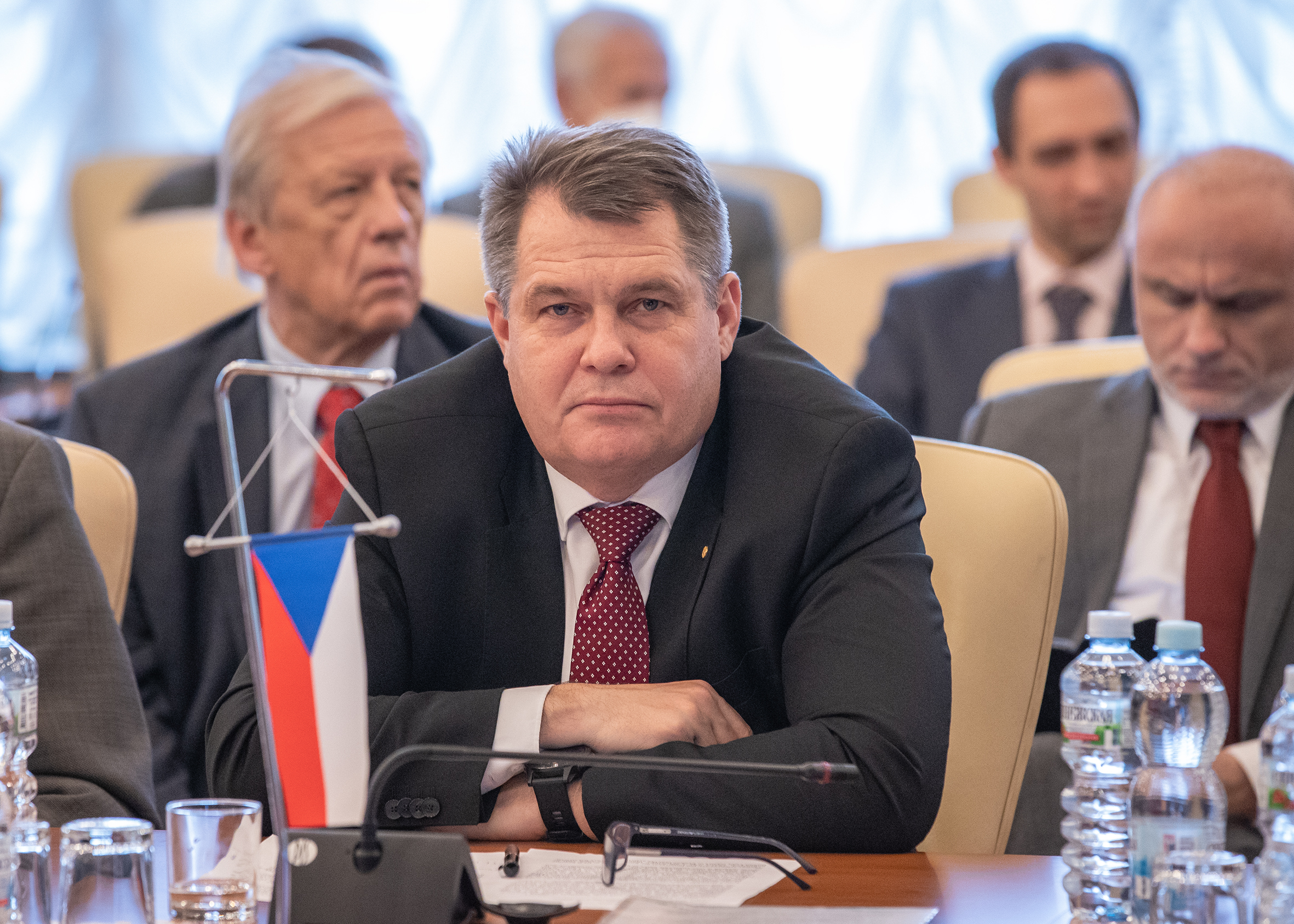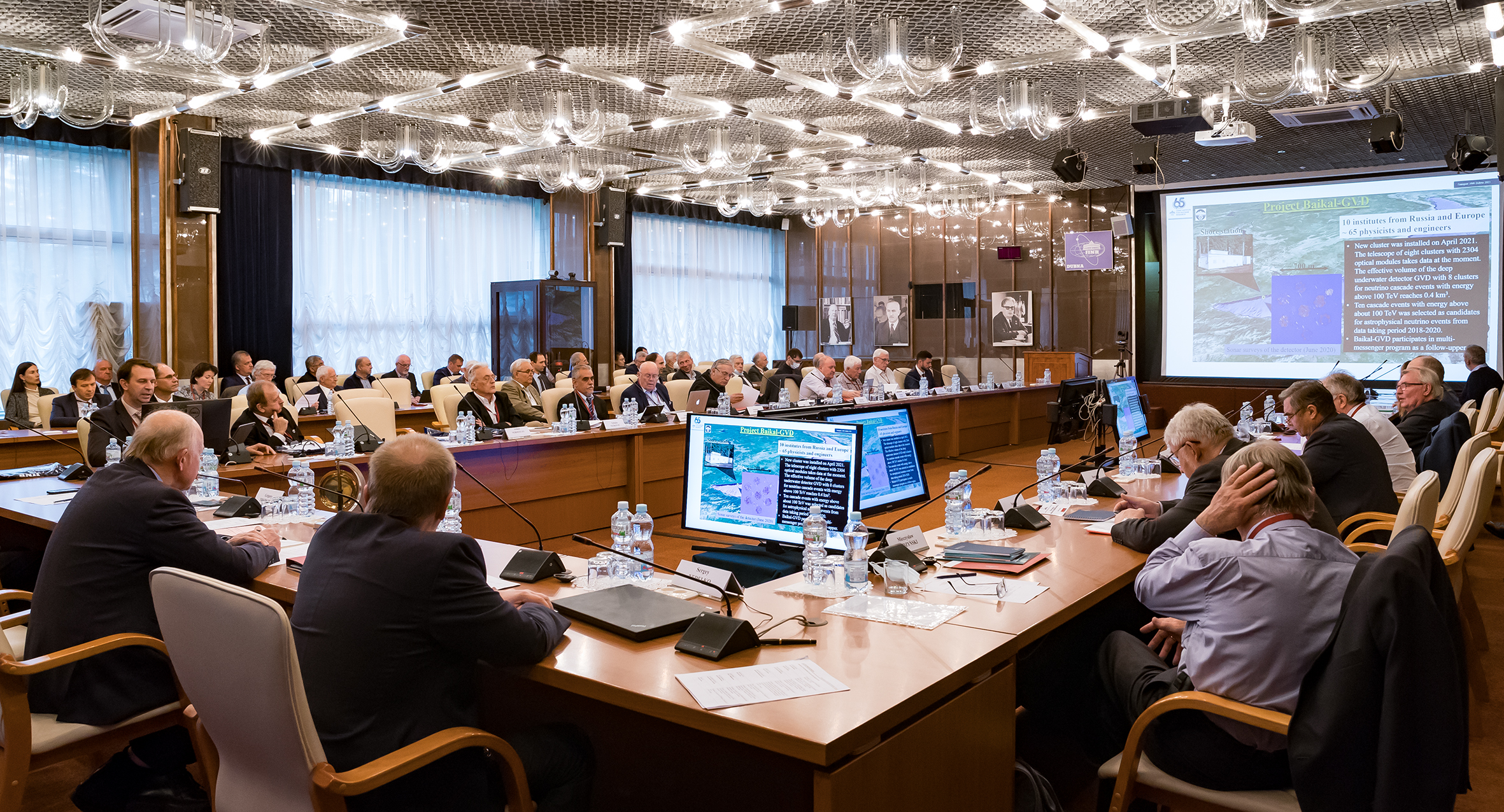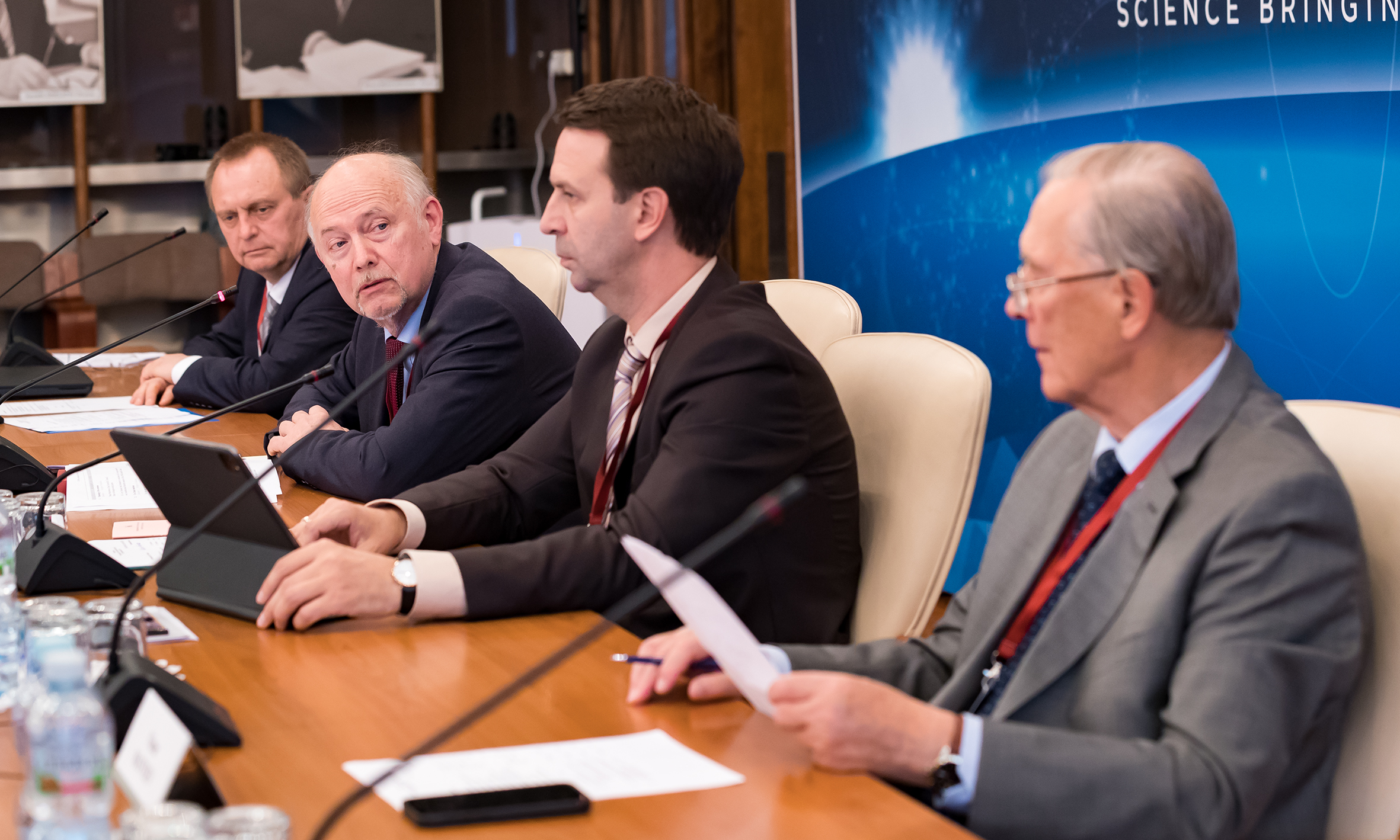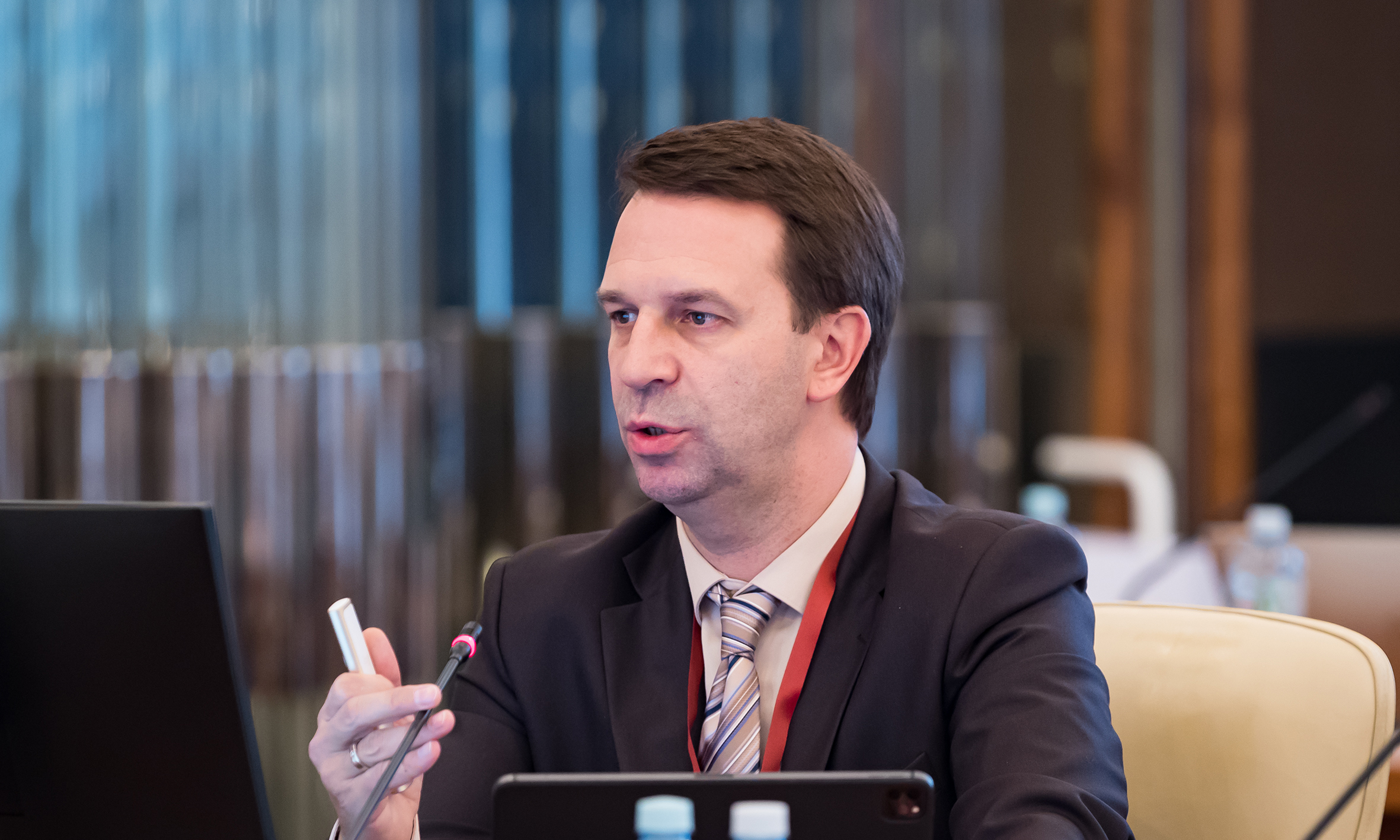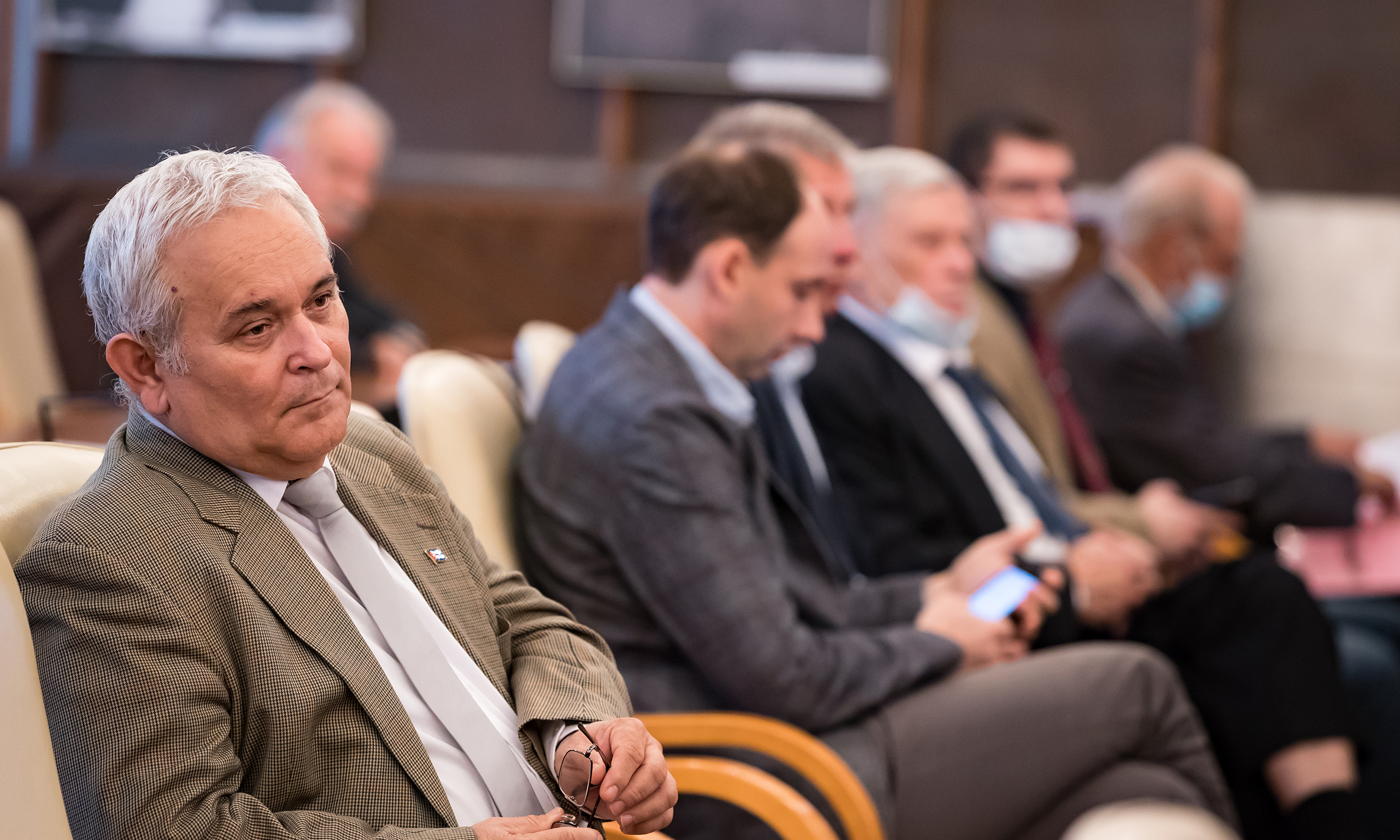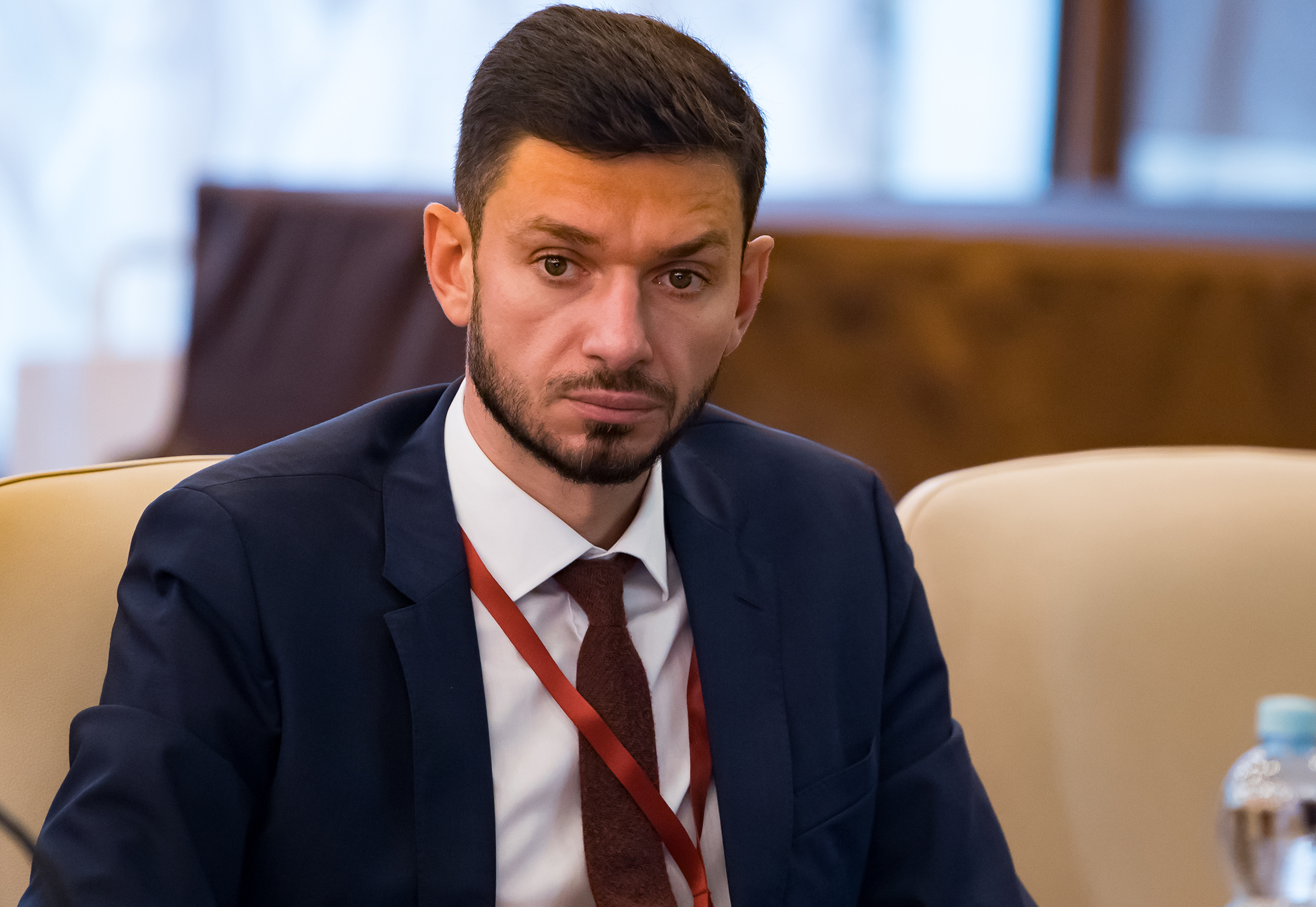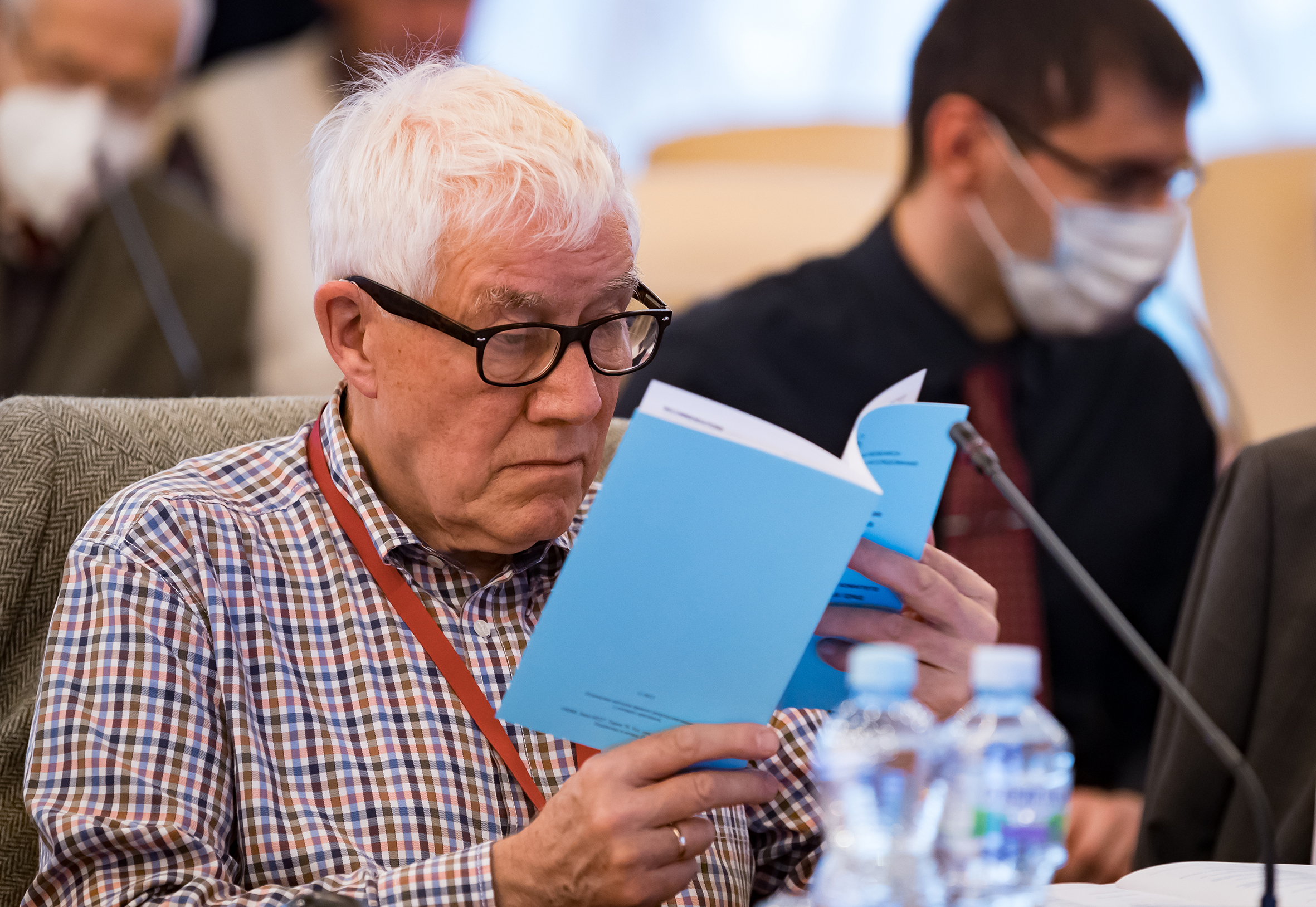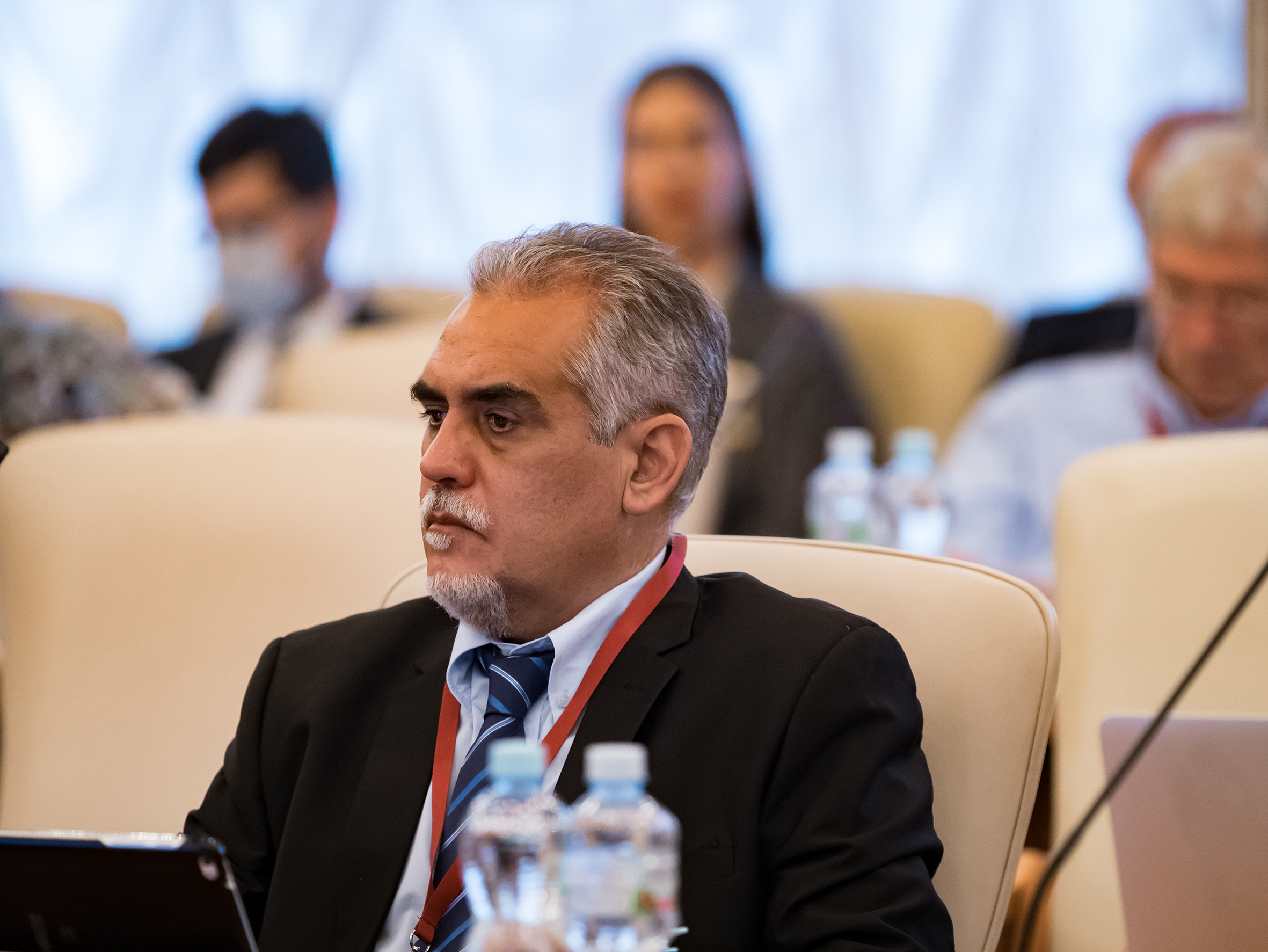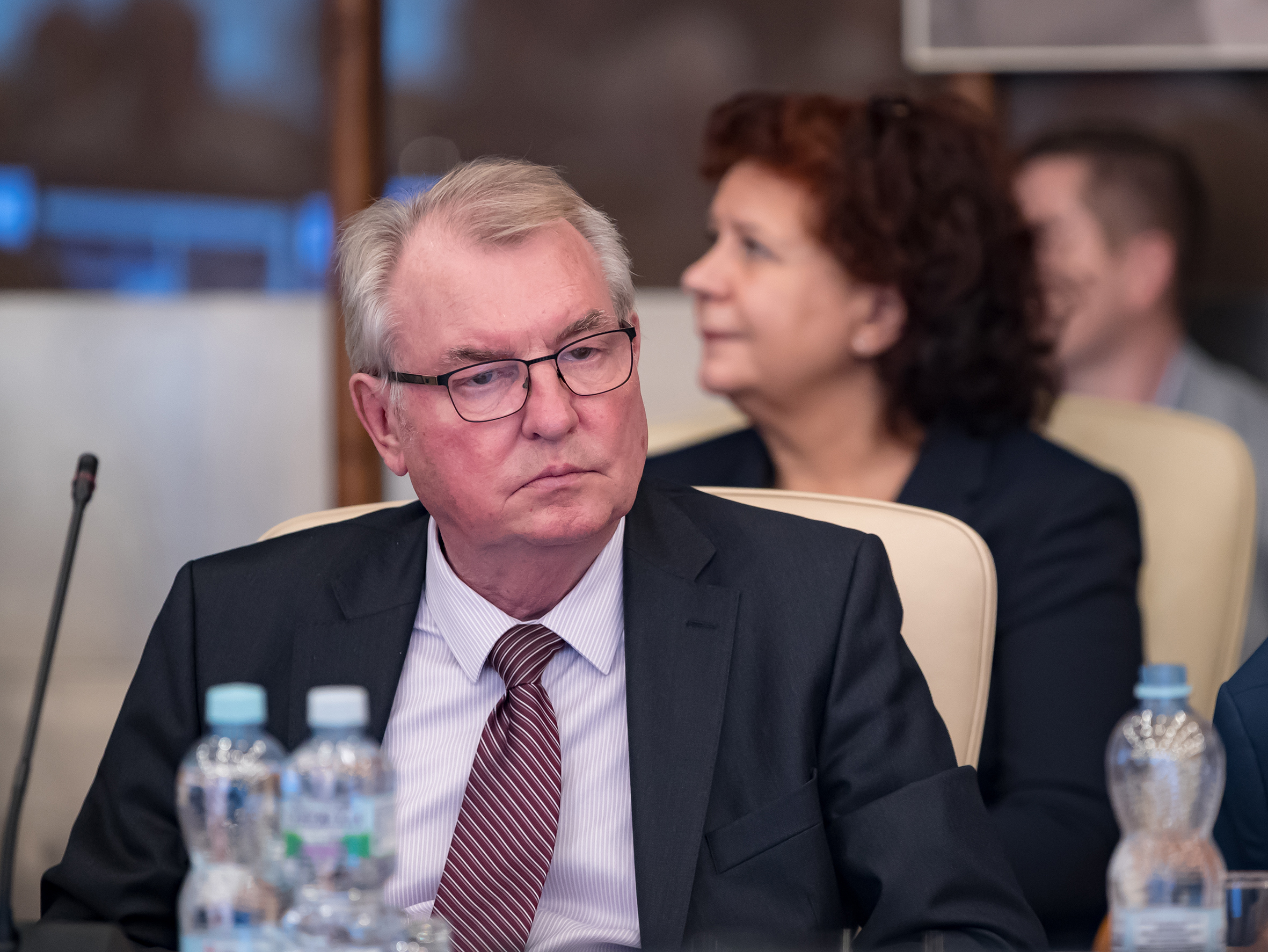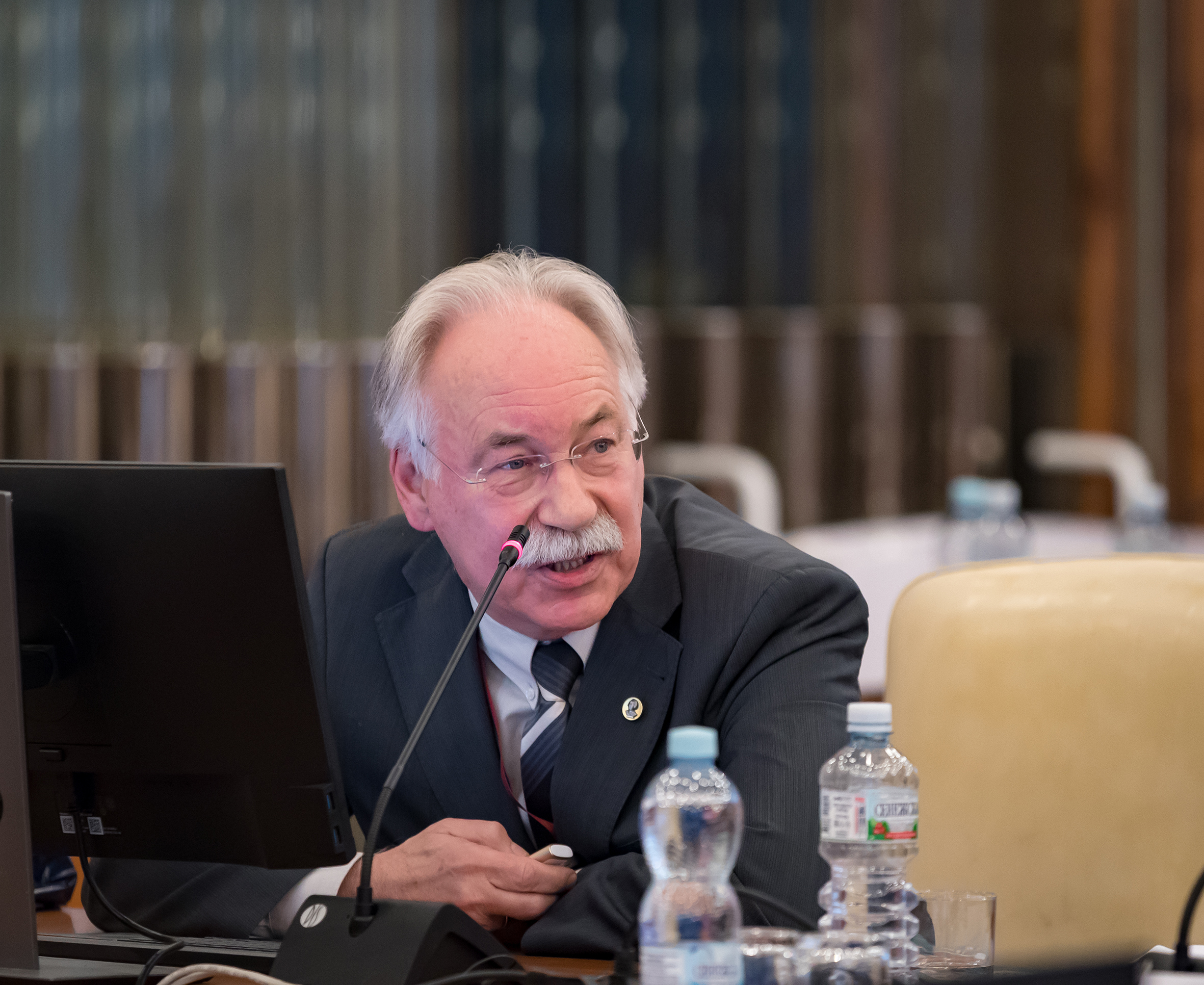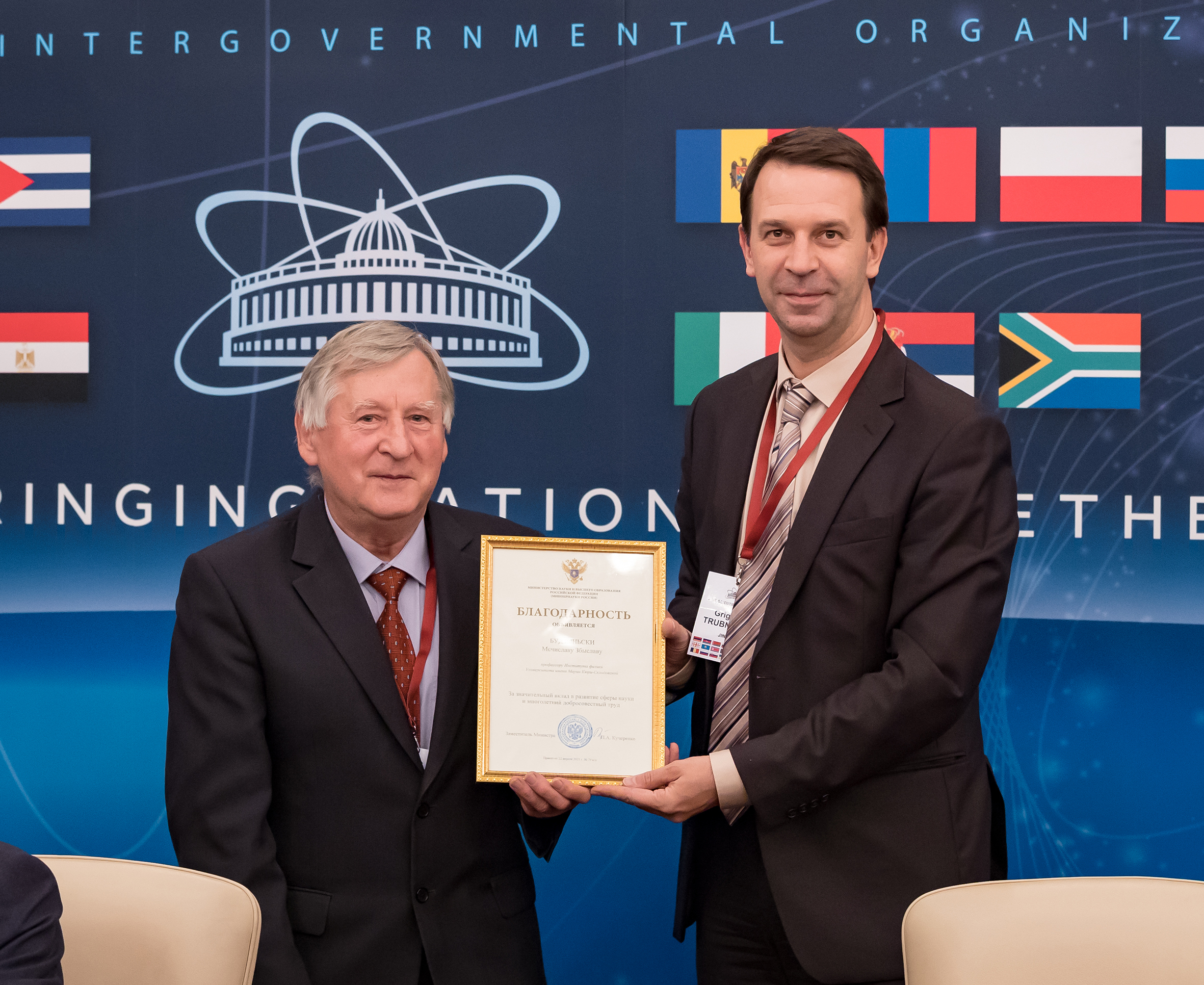At 130th session of JINR Scientific Council
Organization, 29 September 2021
The regular 130th session of the JINR Scientific Council took place in the International Conference Hall on 23 – 24 September. JINR Director Academician Grigory Trubnikov opened it with an overview report on the main results of the Institute’s work achieved since the previous session in February.
Participants of the session reviewed June recommendations of the JINR Programme Advisory Committees. PAC Chairmen Itzhak Tserruya (particle physics), Marek Lewitowicz (nuclear physics), and Dénes Lajos Nagy (condensed matter physics) presented corresponding reports.
Director of the Bogoliubov Laboratory of Theoretical Physics Dmitri Kazakov made the report “Four pillars of BLTP” at the SC session.
On the first day of the session, a young JINR researcher Dina Badreeva made a report recommended by the PAC for Condensed Matter Physics “Effect of charged lipids on β-amyloid peptide interactions with a phospholipid membrane”.
On Friday, 24 September, Director of the Laboratory of High Energy Physics Richard Lednický reported on the implementation progress in the NICA project. JINR Director Grigory Trubnikov in his report presented the first steps in the implementation of the JINR Long-Term Development Strategic Plan.
In honour of the 65th anniversary of the Institute, the agenda of the session included greetings from the official representatives of the diplomatic missions of the Czech Republic, Poland, and Slovakia, the JINR Member States.
The Scientific Council approved the proposal of JINR Director Grigory Trubnikov to award the title of Honorary Doctor of JINR to RAS Corresponding Member, President of the National Research Centre “Kurchatov Institute” (NRC KI) Mikhail Kovalchuk for his outstanding contribution to the development of priority fields of science and technology and scientific staff training.
Professor Alexander Olshevsky, the Laboratory of Nuclear Problems JINR, presented the winner of the B. Pontecorvo prize for 2020 at the session. The Prize was awarded to Professor Kimio Niwa for the development of the method of high-resolution nuclear emulsion that had allowed identifying tau neutrino and directly observing Tau neutrino oscillations.
At the end of the Scientific Council, winners of the JINR annual prizes for the best scientific papers in the fields of scientific research, methodology, research and technology, and applied research received diplomas. The session was concluded with a general discussion and adoption of the Resolution of the Scientific Council.
Comments by members of Scientific Council
Plans being implemented
Professor Michal Hnatič (Slovakia)
– What peculiarities do you see in the present session?
– At the regular 130th session of the Scientific Council, we have been traditionally discussing the way scientific plans, achievements and so on are being implemented, but the peculiarity of the session is that representatives of the diplomatic missions, Plenipotentiary Ambassadors of the Czech Republic, Poland, and Slovakia to Russia took part in the event. As you know these countries are the JINR Member States and their Plenipotentiary Representatives took part in the session with interest, listened to reports, and congratulated members of the Scientific Council, all employees of the Institute on the 65th JINR anniversary. This is the peculiarity I see in the 130th session.
– The Director in the report have said that despite the pandemic, the Seven-Year Plan for the Development of JINR is in fact fulfilled by 70 %…
– Surprisingly enough, we do really fulfill the plans. Let’s omit some details that did not depend on us because of the pandemic. As for the scientific programmes, implementation of tasks of research projects, everything is going as planned. New projects have been approved and a so-called “green light” has been given to the implementation of the next tasks of the Seven-Year Plan, i.e. up to 2024.
– Michal, unfortunately, I could not listen to the report by the Director of your Laboratory, as far as it coincided with the opening ceremony of the JINR Press Office here, in the International Conference Hall. You know, the position obliges… However, I was much interested in the report by Dmitri Kazakov “Four pillars of BLTP”. What are these pillars?
– It is quite simple. The “pillars” are the main directions of the scientific activity of our Laboratory. Physics of fundamental interactions, nuclear physics, solid-state physics, and mathematical physics. The Director of the Laboratory spoke in detail about our latest results in all these fields. He highlighted that we are one of the best, leading laboratories of theoretical physics in the world. He also provided particular figures characterising the level of our work. Of course, he highlighted the internationality: there are many researchers from the Member States working here and from other countries as well. For example, there are a lot of staff members from India. He also paid special attention to the age distribution at our Laboratory, and thus showed that we had managed to achieve the younger average age of the staff. Nowadays, there are a lot of people aged 25 – 40 at the Laboratory. It is very joyful. It should be highlighted that we select them carefully. As Deputy Director of the Laboratory, I can guarantee that they correspond to the very strict criteria in terms of both scientific training and achieved scientific results.
Institute on the rise
Professor Roumen Tsenov (Bulgaria)
– How do you rate this session?
– It is a good session. It is more or less traditional. 12-13 members of the Scientific Council have come for in-person participation. We hope that the pandemic will end one day. Because it is not convenient to talk to each other through TV screens. Direct communication is always more effective and useful. So… The results are good. Major flagship projects of the laboratories are progressing well. It is clear that the Institute is on the rise. There will be new countries… We have just heard about Egypt, Serbia is on the way as I have been told. The geography is expanding, the internationality of the Institute is increasing. And it is great, in fact. Dubna does really turn into the world centre of nuclear science, let’s say, of subatomic physics.
– 2021 is declared the Year of Bulgaria in JINR. How can you comment on this fact?
– Bulgaria is one of the founding states of the Institute. Bulgarian scientists have been working at JINR since its establishment. The next meeting of the Committee of Plenipotentiaries is planned to be held in Sofia in November. Its usual agenda includes also events dedicated to the 65th anniversary of JINR, and I hope that this year will be the year of our strengthened friendship.
Seeing is believing
Professor Ivan Wilhelm (Czech Republic)
– How do you, a long-standing member of the Scientific Council, rate today’s state of the Joint Institute?
– It is easy for me to answer this question as far as yesterday, we said that there could be a tour of new facilities, and it was quickly organized. Today, we have visited the Superheavy Element Factoryhttp://flerovlab.jinr.ru/she-factory/ and the NICA complex. Both facilities determine the future of the Institute and impress so much that I cannot but recall a proverb: seeing is believing. We have heard many times reports on the progress in the creation of these facilities. However, everything we have seen there… Some elements cannot be described in any report. When you meet people working on this project, feel their enthusiasm, see the way they are speaking about their work – all this speaks for itself. And one sees, understands that these are very strong and competent people. First of all, they perfectly know the tiniest details of their work, they know the importance of their contribution to the entire project. Secondly, they feel support of their managers. And this is the guarantee that everything will be great in terms of both the quality of work and the timing of its implementation.
Photos by Elena Puzynina and Igor Lapenko


